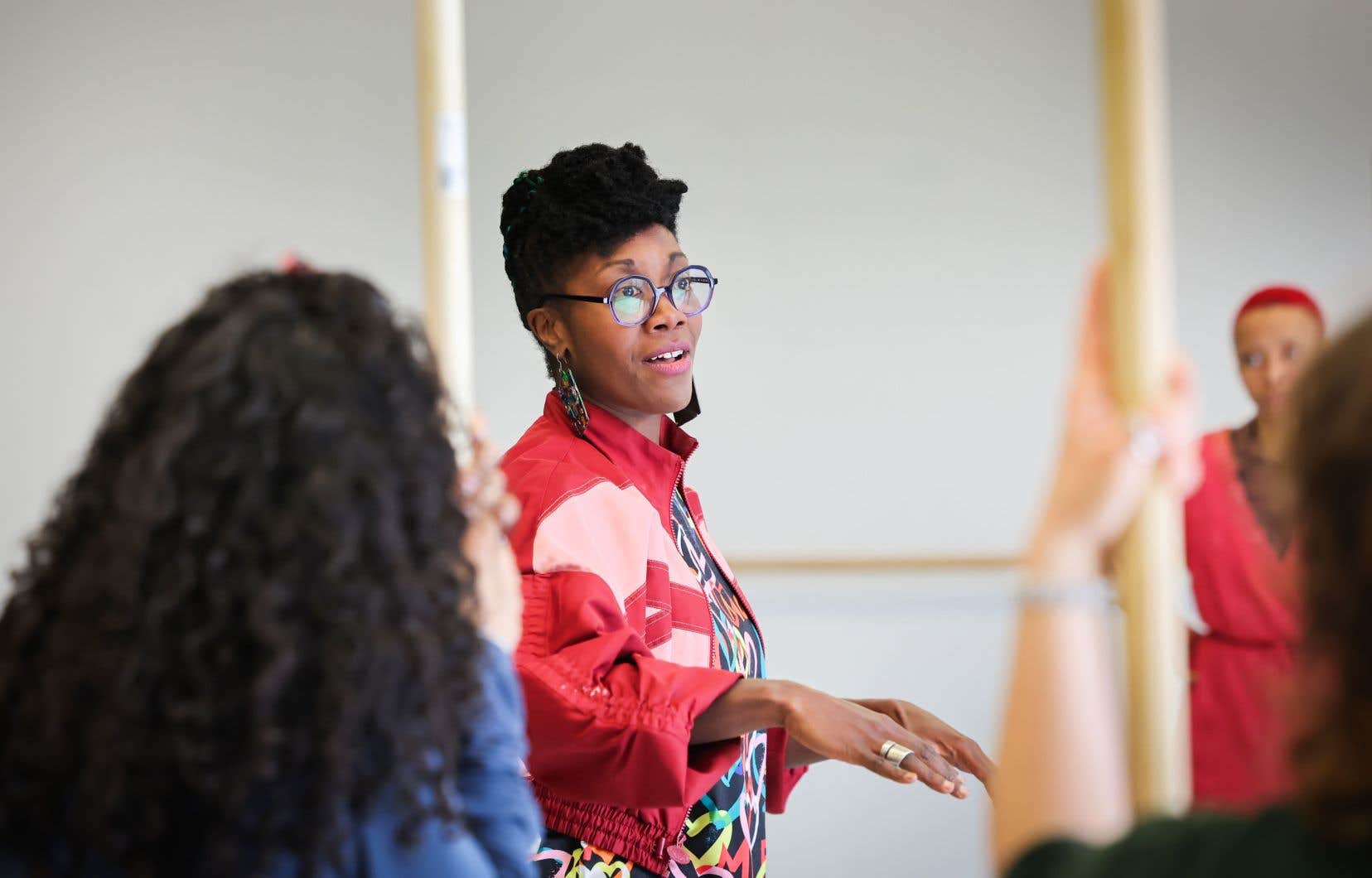After more than three years of research, the creation Symphony of hearts by Rhodnie Désir, first associate artist of Place des Arts, will come to life from April 4 to 6 at the Salle Wilfrid-Pelletier. A major work for 11 performers and the 60 musicians of the Metropolitan Orchestra, Symphony of hearts is intended to be both scientific and artistic research on the heart, its system and its faults.
“A great, very positive whirlwind, full of magnificent encounters. Humans are really the big theme that ultimately emerges. » This is how Rhodnie Désir describes the last two years. Indeed, since the choreographer was named the first artist associated with Place des Arts, she has continued to work and immerse herself body and soul in her new work. “We managed to solidify ourselves, to surround ourselves with the best creators for this work, but also to understand the orchestra, the group. It represents a lot of big steps to finally be able to build a heart surgery team,” she explains.
Indeed, for the artist, the parallels between the stage and science are constant. For her documentary creation, she collected around a hundred testimonies, both from surgeons and people who have had a brush with death, who have received a heart transplant or who have experienced heart disease. “It taught me to work differently in a team. I had a good idea of that on an artistic and entrepreneurial level, but in the world of emergencies, it’s a whole different thing, says Mme Desire. During operations, the surgeon will constantly look for solutions. It is his team who will tell him when to stop, when it is too late and life is gone. »
The artist also looked at the reality of doctors, anesthesiologists, cardiologists, etc., and their isolation. “They are all trying to give a body a chance so that it can continue to dream, to build a society. If they do not achieve their goal, it is their body that must leave the room and tell loved ones the news, then quickly cut this connection, ending up in deep solitude most of the time. »
Scientific research and all these testimonies fueled the creation of Rhodnie Désir. And the artist quickly brought “the notion of responsibility” to his team. “When I told anecdotes, there was great respect. These people, with great openness, share their lives with us. And not everyone has the keen ears to listen to that, she explains. It was often a springboard for emotions that were then brought down into the body. Today, I still see and hear these testimonies, embodied by interpreters. »
These are several themes, waiting, challenge, transplantation, love, which then punctuate the creation.
Develop languages
It’s not just the body that guides creation Symphony of heartsbut several artistic aspects, such as scenography or even lighting, which are just as “fundamental” for Mme Desire. “It’s really a whole, a creation that was possible thanks to all these beautiful people. For example, we have a huge mirror that hangs over our heads and allows us to see the work from different sides, like the surgeon and the patient during an operation. Light, for its part, plays with microtextures, transitions and night. Finally, the costumes transform and coat the bodies like chests of gold on stage,” describes the choreographer.
“Coming to see the show means accepting that nearly 200 hearts come together at the same time to deliver a 75-minute bouquet,” says Rhodnie Désir. Indeed, if we take into account the musicians of each orchestra, the performers, the people who testified and the technical part of the creation, there are nearly 200 people who contributed to the birth of this show.
Moreover, Symphony of hearts was created in collaboration with three philharmonic orchestras: the National Arts Center Orchestra of Ottawa, the Orchestra of Italian Switzerland of Lugano and the Orchester Métropolitain de Montréal conducted by Naomi Woo. An “inspiring” process for Mme Desire. Quite early in the research, she invited the performers to attend readings, accompanied by the Orchester Métropolitain, so that they “understand what it causes in a body”. “Today, sound is viscerally linked to their bodies,” she says.
“The heart is also pulsation and polyrhythms,” continues Mme Desire. She adds that the role the orchestra plays has been much more important and studied than she thought. “I couldn’t have imagined that we were going to decolonize the composition, but it was the case. It’s rare, a company whose language is not Eurocentric. Yet that’s what we did,” she explains.
Thus, the music was composed by Jorane and the beatmaker Engone Endong, then transmitted to orchestras. “Engone is the guardian of Afro-descendance on stage, as well as rhythm and symphony. The people in the orchestra had to grasp the Afro-descendant rhythms and, thanks to this formula of real co-creation, which forced us to develop languages, we arrived at an authenticity in the end,” affirms the choreographer.
With Symphony of hearts, Rhodnie Désir hopes to breathe “a hymn to life”, because during the course of her research, she realized how “fragile” she was. “If we have the privilege of sitting in this room, it’s because we’re still alive,” she concludes. I would like us to understand to what extent, every day, we have access to something that others no longer have. We must no longer take the body for granted, but eat life, enjoy it and continue to dream! »
